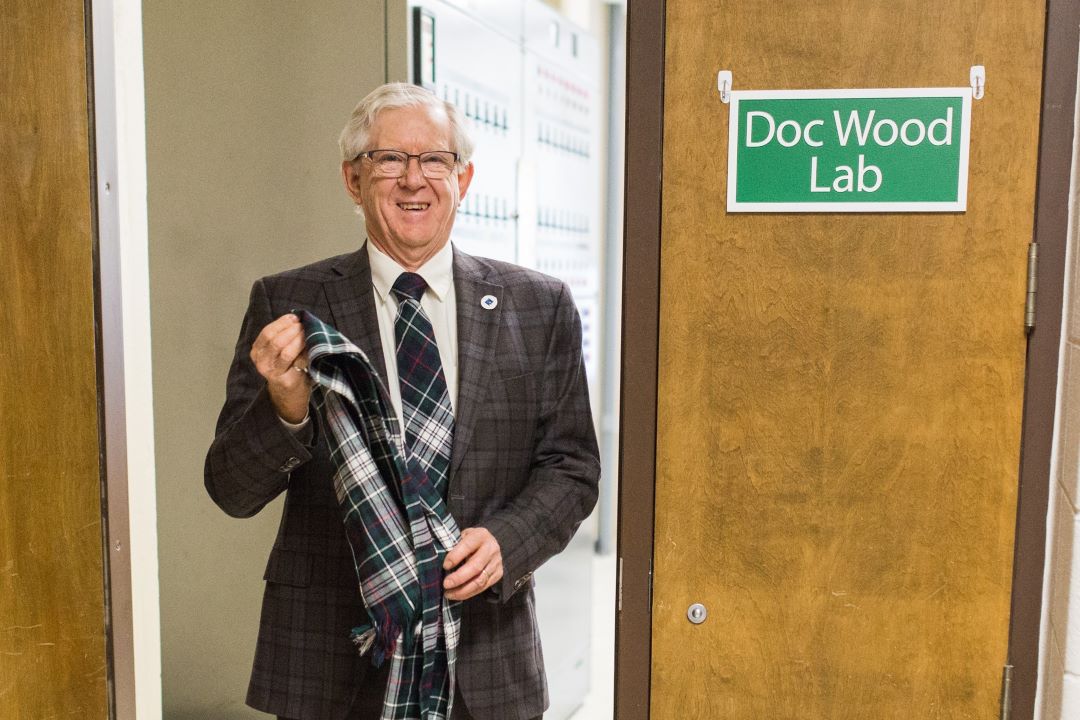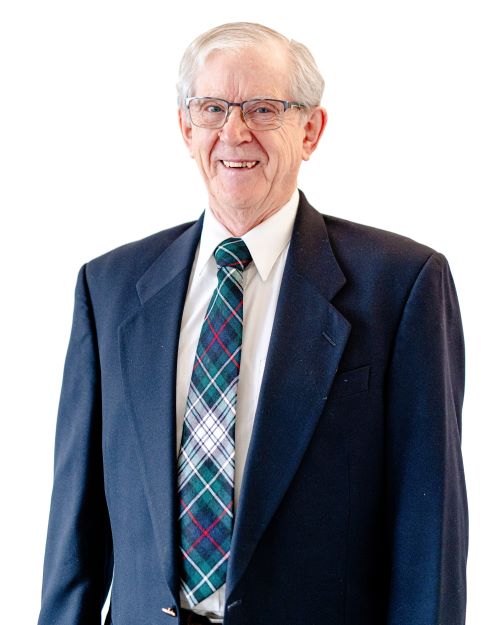
Academic and entrepreneur: Hugh Wood created opportunity for USask grads
Professor Emeritus Hugh Wood is being honoured by USask Engineering as the Distinguished Lecturer at the college's 2024 C.J. Mackenzie Gala.
By Donella HoffmanAfter earning three degrees at the University of Saskatchewan College of Engineering (USask Engineering) Hugh Wood’s academic journey took him to Sweden, but he couldn’t resist the call to come back to the prairies.
“Well, it’s home,” he states simply when asked why he returned to the province after spending two years in Stockholm doing his postdoctoral studies.
Wood, now a professor emeritus, earned his bachelor’s (’66), master’s (’69), and PhD (‘72) in Engineering Physics from USask Engineering.
Since then, his engineering career has featured an impressive combination of achievement in academia and entrepreneurship: from leading the Department of Electrical and Computer Engineering at USask, to playing a pivotal role in helping to grow Wavecom Electronics from a Saskatoon-based start-up to Vecima Networks, now traded on the Toronto Stock Exchange.
In both realms, Wood has been eager to ensure young USask engineers had opportunities to stay in the province and capitalize on their made-in-Saskatchewan skills and education.
In recognition of Wood’s contributions, he will deliver the keynote lecture at the 47th annual C.J. Mackenzie Gala and will be inducted into the college’s Alumni Wall of Distinction. The gala, which happens Jan. 30 at Saskatoon’s Prairieland Park, annually draws hundreds of engineers, industry, students, faculty and staff. Tickets are available online on Eventbrite until Jan. 24.
Wood’s ties to Saskatchewan – and his decision to study engineering – are rooted in growing up on his family’s small farm near Melfort, roughly a two-hour drive northeast of Saskatoon.
He often had questions about various natural phenomena, like what caused the northern lights or how sound travelled.
“From my room, I saw my father out in the field, pounding in a fence post. I saw the hammer hit the post and I didn't hear the sound for awhile. I said, ‘Well, what's going on?’ How come I could see it, but I didn't hear it?”
Meanwhile, the matter of keeping a small farm running with very few tools provided an infinite opportunity to learn about mechanical and electrical matters.
“It's a survival thing to be able to solve problems on a day-to-day basis and to fix things,” said Wood.
His parents supported his curiosity by making sure he and his siblings had books on hand so they could further explore their interests. Then, when he read about engineering in a university course catalogue, Wood knew it was the right fit, as was choosing to study Engineering Physics once he arrived at the college.
“With those fundamental things that you wonder about, the best source of answers is in physics,” he said.

After completing his postdoctoral studies in Sweden, Wood came back to Canada in 1973. A poor economy meant jobs in academia were scarce, so he instead took an entry level job at SED Systems. It was then a relatively new company that had been spun off from USask’s Institute of Space and Atmospheric Studies, with SED short for Space Engineering Division.
Wood worked in remote sensing and instrumentation, exploring if commercial products could be created using the technology SED had developed during its rocket research programs.
“There was a real good combination of physics and engineering so it was natural for me to go there,” said Wood.
Wood says SED proved that a local technology company could survive and provide opportunities for USask grads to stay in the province, rather than moving to Alberta or Ontario.
“(SED) had grown out of the university and was what we would now call high-tech.
"It was interesting and productive work, it could actually hire people and we could use the education we received here. SED was the spark that showed it was possible.”
Wood became the manager of research and development at SED, with his work focusing on ag monitors. During this time, he also began teaching part-time at the College of Engineering, after a friend at the college asked him to help it out of a bind.
When SED turned its focus to satellite technology in the mid-1980s, Wood decided the time was right to become a full-time faculty member, and later served as head of the Department of Electrical and Computer Engineering from 1993 to 2000, when he retired from the university.
“Teaching was probably the most enjoyable part because you can see the faces of students when they catch on to something,” he said.
During his time on faculty, Wood was integral in the development of the Digital Signal Processing stream and was a respected leader and team builder in the college. In 2019, the 2C74 electrical engineering undergraduate lab was renamed in his honour.
Though he was fully immersed at the college during this period, Wood would also find himself making another foray into the private sector.
In 1987, USask had attracted another SED employee, Surinder Kumar, to join the college as the NSERC Industrial Chair in Telecommunications. Wood says one of the goals for the chair was to support the growth of the local tech industry.
Kumar saw an opportunity to develop technology to convert satellite signals to a format that television stations could transmit on their cable systems. He founded Wavecom Electronics in 1988, working on the company after-hours until he resigned from USask a few years later.
Although Kumar “had the technology down pat” he needed help with managing his fledgling company, so he hired Wood as chief operating officer, a position he held until he retired in 2013.
The company is now headquartered in Victoria but maintains a presence in Saskatoon. At one time, it had about 900 employees in the city, providing a range of technical, management and administrative jobs.
“We work so hard as profs to teach all these bright young students coming through the university and it’s provincial money, basically, that’s supporting the university,” Wood said. “When I saw all these students leaving the province, I said, ‘Well, that’s unsustainable. We have to do something about that.’ ”
Being part of the growth of Saskatoon’s tech sector – through his work at SED and Vecima – is something Wood looks at with a sense of accomplishment in seeing local people – and USask Engineering grads – being able to build good careers in the city.
“There is satisfaction to have created the opportunity locally so all these people could work productively in their home environment without having to leave and go somewhere else to get that same sense of fulfillment.”

